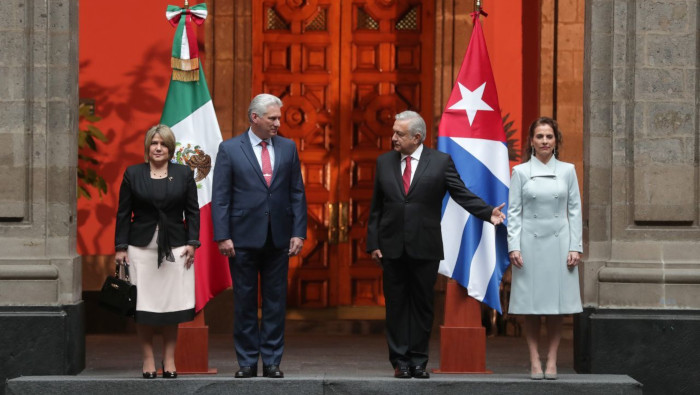
CELAC and changes in Latin America
When the idea of creating the Community of Latin American and Caribbean States (CELAC) took shape on February 23, 2010, and a year later was consolidated in Caracas, Venezuela, under the presidency of Hugo Chávez, it seemed to have achieved Simón Bolívar’s dream of integration when he convened the 1826 Congress of Panama.
In the end, the 33 countries of the American subcontinent seemed to be able to come together to settle disputes, combine interests and project future plans, without the hegemonic tutelage of the United States. The agreement to declare Latin America and the Caribbean as a “Zone of Peace”, signed at the II Summit of Havana, in 2014, as well as the weight that the Latin American and Caribbean consensus had in the process that led to the reestablishment of diplomatic relations between the United States and Cuba, in 2015, reflected the validity of entrepreneurship and the predominance of the most progressive and independent positions of the countries of the region.
But the right did not take long to react. The coups against Manuel Zelaya, in Honduras; Fernando Lugo, in Paraguay; and, above all, Dilma Rousseff, in Brazil; as well as the electoral victories of Mauricio Macri, in Argentina; Sebastián Piñera, in Chile; Jair Bolsonaro, in Brazil; Iván Duque, in Colombia; and Luis Lacalle, in Uruguay, together with the scandalous betrayal of Lenin Moreno, in Ecuador, radically changed the Latin American political landscape.
In 2011, to counteract the integrationist model of CELAC, the neoliberal governments of Colombia, Chile, Mexico and Peru planned the creation of the Pacific Alliance and, in August 2017, in order to act specifically against Venezuela, they created the so-called Grupo de Lima, made up of nine Latin American countries, four Caribbean countries and Canada. The United States does not appear formally in these initiatives, but its presence is felt, especially when Donald Trump assumed the presidency and his most reactionary policies were in plain sight.
The OAS — under the secretariat of another renegade from the left, Uruguayan Luis Almagro — resumed the leading role lost as a result of the advancement of progressive governments. With the 2019 coup against Bolivia’s Evo Morales, the OAS assumed the profile of its worst moments. CELAC appeared disjointed at this time, to the point of being unable to convene its meetings for several years, but it did not disappear. It remained in hibernation and this constituted a respite from misfortune.
When it seemed that Latin America and the Caribbean were destined to relive decades of right-wing governments, subordinated body and soul to the United States, things changed again. In particular, Venezuela has resisted the onslaught of aggression and isolation, brought to levels only comparable to those suffered by Cuba, which again has also survived the most destructive policies of the United States.
The social protests could not be stopped by the brutal police repression that spread through Chile, Argentina, Peru, Ecuador, Colombia, Bolivia and other countries ruled by the right. Alberto Fernández won the Argentine elections, the MAS of Bolivia recovered from the coup and won elections in that country; Pedro Castillo obtained a close victory in Peru and his first foreign policy decision was to withdraw the headquarters of the Group de Lima, which has finally been declared dissolved.
Above all else, in 2018, Andrés Manuel López Obrador (AMLO) triumphed in Mexico and that country once again showed its historic vocation of Latin American and Caribbean leadership abandoned by the last governments of the PAN and the PRI, which adopted a policy of shameful subordination to American dictates.
Although it was part of the Lima Group, the AMLO government refused to join the policy against Venezuela. At the cost of extraordinary political risk, it took steps to rescue Evo Morales from the Bolivian coup plotters and offered refuge to many MAS leaders in the Mexican embassy in La Paz. Mexico provided its territory for the talks between the Venezuelan government and the opposition, and together with Argentina proposed the recovery of the CELAC and the replacement of the OAS by a new type of institution free from subordination to the United States.
The call to the VI CELAC Summit, held on September 18 in Mexico City, should be understood as a necessity to reduce Mexico’s asymmetry in its relations with the United States and to be able to face them under the principles of sovereignty and self-determination, as valued in the traditions of Mexican foreign policy.
This explains AMLO’s interest in highlighting the presence of Cuba, highlighted by a special invitation to President Miguel Díaz-Canel who was honored at the celebrations for the Grito de Dolores, where AMLO reaffirmed his proposal, clearly symbolic, to declare Cuba’s resistance against attacks by the United States as a patrimony of humanity.
No domestic interest justifies this attitude, precisely in one of the most complex moments of the Cuban situation, when greater political capital is the taking of risks in defending it. If anything, apart from the reasons of State, AMLO had the pleasure of showing all his dimension as a man of the left, because that is what supporting Cuba represents, especially for Mexicans.
Beyond its concrete results and the anecdote of Lacalle’s commotions with Maduro and Díaz-Canel, the importance of this summit is that it could be held in the midst of the pandemic, with the presence of 16 heads of state and representatives of all countries, except for Bolsonaro’s Brazil, thanks to the convening capacity demonstrated by Mexico and the underlying interest in most Latin American and Caribbean governments to keep CELAC alive, contrary to the wishes of the United States.


